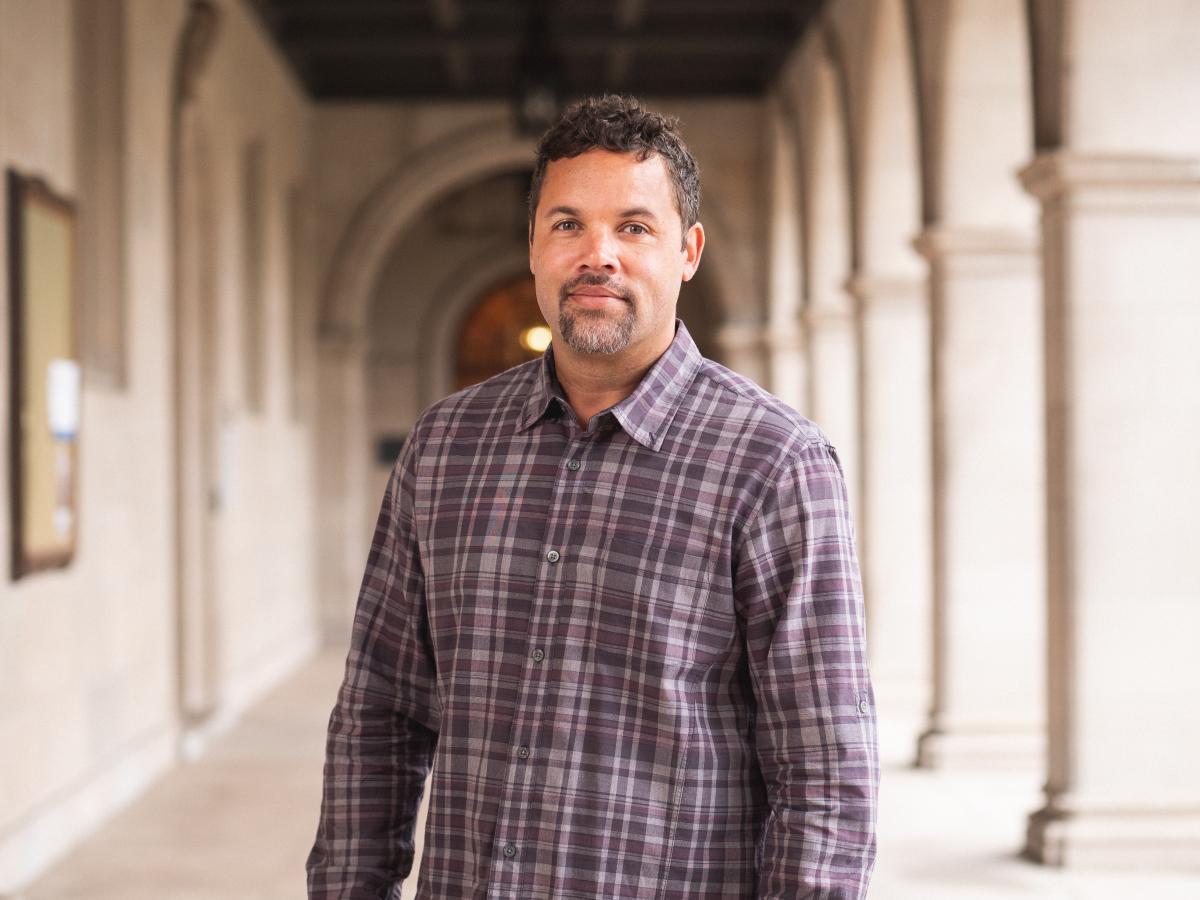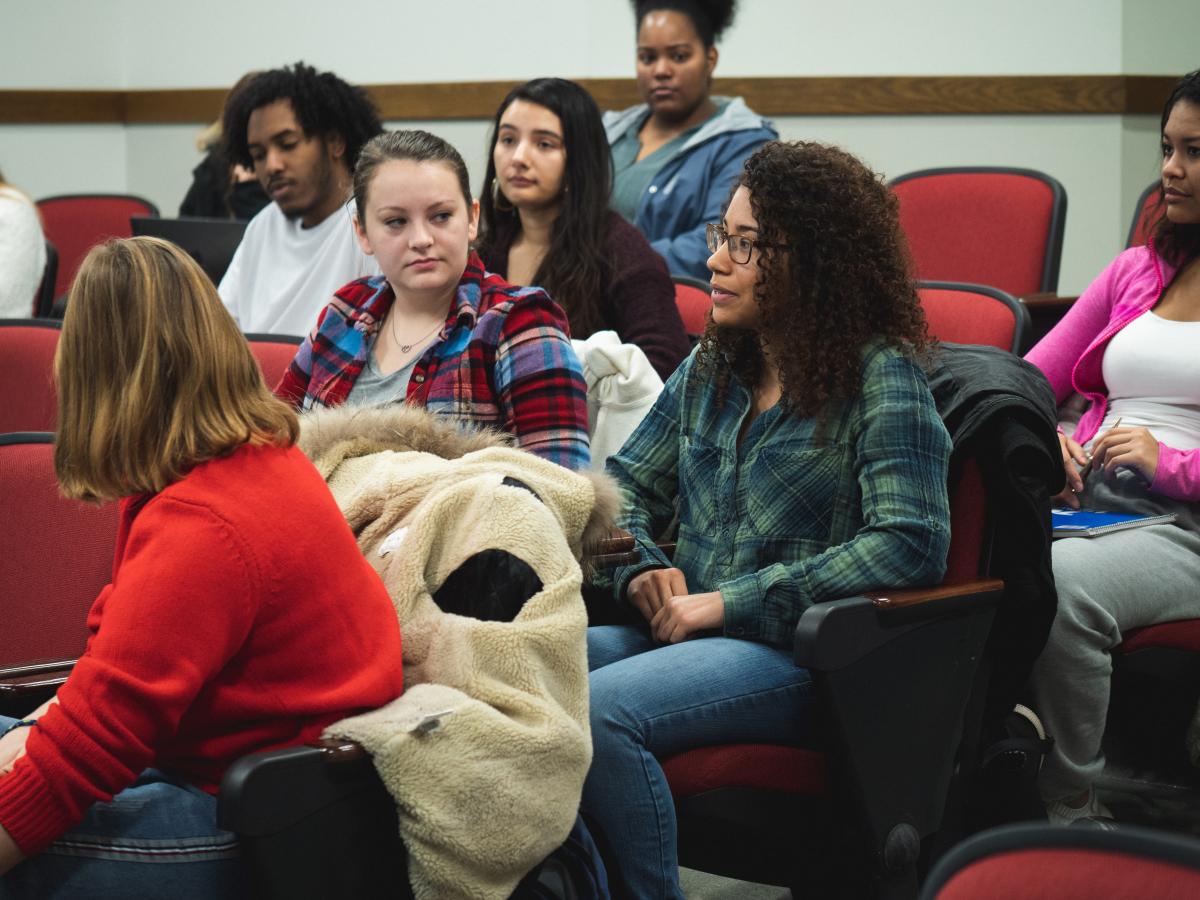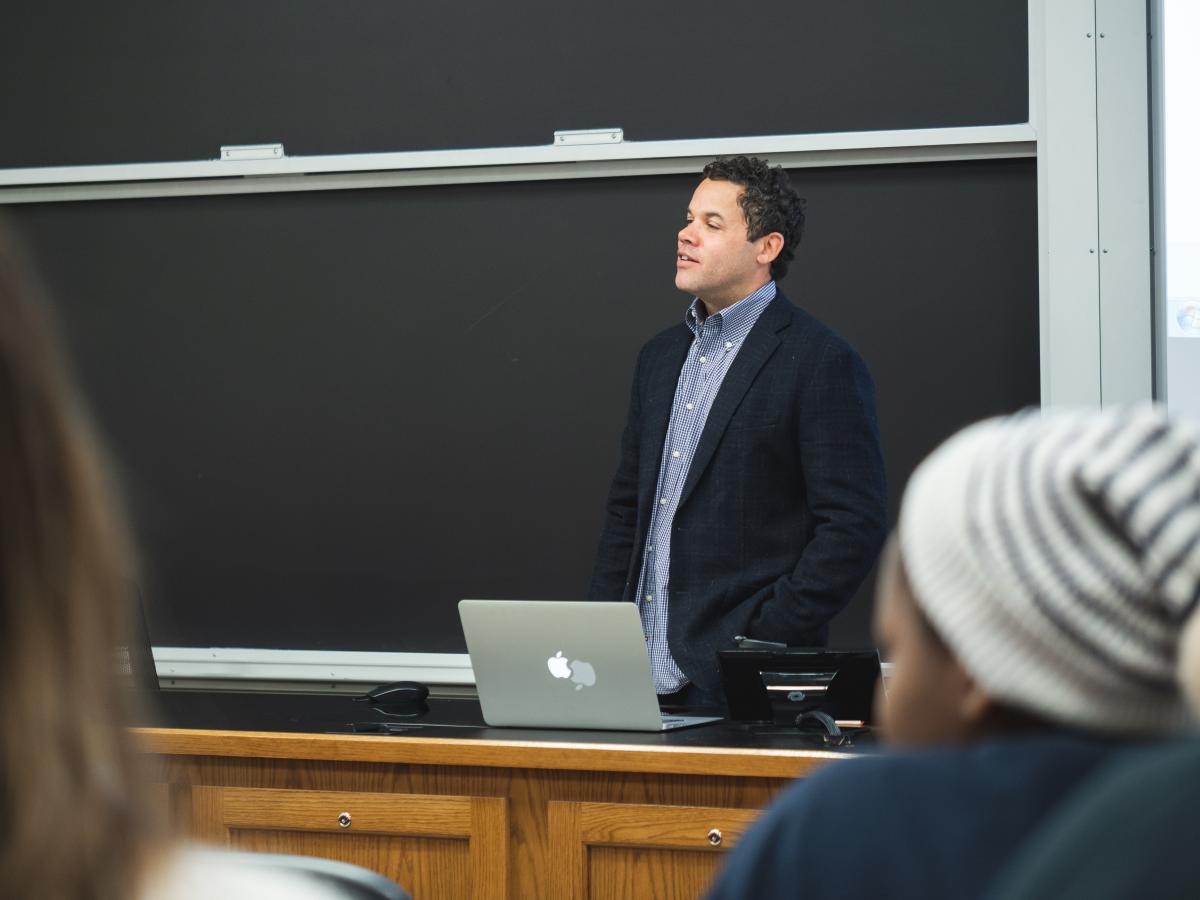In honor of Martin Luther King Jr. Day, Geoff Ward, the newly appointed associate chair of African and African-American Studies, discusses the history of the department, his work on legacies of racial violence, and the future of AFAS.

50 years ago, in 1969, Washington University first created a Black Studies program. Do you see this occurrence as linked with the assassination of Martin Luther King, Jr., in 1968? If so, in what ways?
The Black Freedom Movement played a crucial role in establishing African and African-American Studies departments and programs around the country. A longer and global view of that movement is needed to appreciate both the origins of this field of inquiry – through cultural and political developments like the Harlem Renaissance and anti-colonialism – and pressures leading to its formal establishment across college and university campuses. The assassination of King was one of several events that gave greater impetus to the demands that people were making for things like representation, recognition, and respect. The legitimacy of those demands, and their urgency, was clarified by events surrounding the assassination of King, including rebellions in urban centers around the country. It grew clear to political and other elites that there would have to be concessions and some transformation of institutions, including universities.
How do you see this history of university activism being carried forward today?
I think the clearest example I would see today around the country, certainly here in St. Louis, is the movement for black lives. If not student-led in the way that some of the civil disobedience and nonviolent protests of the civil rights era were, college students were involved in very significant ways. There is also significant activism on campus and off around a number of issues relating to things like sex and gender equality, environmental justice, fair employment, and so forth. In some ways, all of those can be seen to have been encouraged and to have benefited from the ideas and strategies that King and many, many others advanced in the context of the Freedom Movement.

This semester, you are teaching a course in which students will design an intervention to facilitate contemporary reckoning of historical violence. Why did you include a practicum component as part of the course?

The main idea of the intervention really is to pull the student into a sense that they have a voice and a role and a responsibility in the challenges of transformative, transitional justice that our country faces. It's not simply something for the state to figure out or for aggrieved populations themselves to figure out. Really, the point of the practicum is to impress upon the students in the class that we all have to get our hands and our hearts around what we can do to transform our political culture if we are ever going to escape the trappings of the past. What they actually do or accomplish in the class is a secondary consideration.
Are there real-life examples of this kind of intervention that you see as successful? In what ways?
There are interesting examples, locally and globally, of effort to advance transitional justice outside of the scope of typically top-down, state-centered approaches like truth commissions and the like. In December I participated in a conference titled "The Light and Shadow of Historical Trauma" at Stellenbosch University in South Africa. People from around the world came together to talk about legacies of racial and other histories of political violence, and the challenges of recognition, reparations, and reconciliation. One of the examples there that struck me was shared by a professor in visual arts at Stellenbosch.
Stellenbosch, it should be pointed out, was a political and intellectual nerve center of the apartheid regime. The town itself and the university bear the imprints of that cultural and political history; a former prime minister known as the ‘architect of apartheid’ had been a professor of psychology there. This visual arts professor developed a class on what she calls visual redress, where students survey the campus environment and think about how the landscape itself bears the marks and does the work of exclusion, and what they might do to transform this space, creating a more inclusive environment. The class projects transform the space in ways that facilitate a break from the apartheid era. For example, students noted that campus signs were typically in Afrikaans, when there are many, many languages spoken in South Africa, so they added translations to the signs in multiple languages to communicate with the larger population that the university should be organized or designed to engage.

I want students in my class to think about what kinds of things we might do along the lines of, say, visual redress. Potential fates of confederate monuments are one example but there are other less obvious ones. There is an historical marker in Clayton, for example, outside the county police headquarters, where St. Louis County is specifically framed and commemorated as a white settlement. Assuming white settler colonialism should be contextualized differently today than it was in 1955 when this county history marker was erected, and particularly on a public marker outside a government office, how should we approach that? What might a decolonized county marker say? What administrative processes and practical challenges does that visual redress involve?
We also still lack sufficient research on the history of racial violence to fully understand the nature of its legacy, related mechanisms, and remedial implications. So, students might engage in archival work, oral history projects, and other research, to inform intervention. By contributing to basic research on these issues, students can involve themselves in the challenge of transformative justice and advance the informational basis upon which that might occur.
How did you first become interested in studying responses to racial violence?
About a decade ago I was invited to join a planning meeting to establish what was called the Mississippi Truth Project. This was an attempt to establish a Truth and Reconciliation process in Mississippi focusing on the violence and dispossession of the Jim Crow period. A few of us there were social scientists, including my close friend and collaborator David Cunningham in Sociology and WUSTL, and we decided at that meeting that we would step aside a bit from the group and develop basic research on histories of racial violence, their legacies, and implications for redress. My role in that work primarily became developing a record of historical racial violence in our two study states of Mississippi and North Carolina, that we would use in analyses of legacies.
I soon realized that we were just picking up a baton that many, many others had carried through the 19th and into the 20th century. Ida B. Wells, for example, back in the late 1800s was one of the first people to systematically document lynching. Her efforts were carried further by Tuskegee Institute and the NAACP, who relied on a much larger network of informants, including local journalists and movement leaders, who collectively worked to maintain and disseminate records of racial terror, specifically because the state and mainstream press turned a blind eye to these events. These folks realized that it was morally imperative and politically useful that these events be known, both to honor those impacted and to advance equal justice.
As I came to appreciate that context, and given the compelling findings of our research, I became very committed to continuing this work, expanding its scope, and developing it in ways that maximize its visibility, use, and impact.
As a new faculty member, what made you want to pursue this kind of work at WashU?
My primary motivation in moving to WashU was the sense that this university, department, and broader community would provide an ideal environment for developing this research on legacies of racial violence and translating it into policy and other interventions. This is a campus and community where the topic has tremendous resonance – where people are already having this conversation and where I can learn and perhaps contribute more because of that. Also, there is great access to resources like archival collections and interested, really talented students who I can work with in smaller group settings that invite more innovative approaches to classes. I was at another institution where my classes were extremely large, with a hundred students typically, making it difficult to develop the creative, experiential learning a small group allows. My Legacies seminar and practicum this semester blends a small group of Arts & Sciences and University College undergraduates, and graduate students from the Brown School, creating a really interesting combination of experiences, skill sets, and perspectives, which is certain to enrich our discussions and projects.

As a leader in the department, what is your vision for AFAS in the years ahead?
AFAS is celebrating its 50th anniversary this year but is a very new department, having been a program until 2017. Our vision for AFAS – what will distinguish our department in the field, on this campus, and in the community – is something my colleagues and I are very focused on now. We will continue to work together to develop that identity, building it into the culture and organizational structure of our department, as well as our engagements with the broader campus and community.
In these conversations I have advocated a kind of disciplinary extension that has interested me for some time. Many years ago I published a paper called "Applying Black Studies,” where I am critical of the field’s limited connections to what I called more practice-oriented fields, such as public health and social work, design, and computer science. I feel that isolation in the humanities and social sciences limits the impact of the field of black studies – that is, the translation of its rich insights into policy and practice. As we discussed at the outset of this conversation, the field grows out of a social movement agenda to not just study society but transform it in ways that improve the people's life prospects and advance social justice.
I am hopeful that our department will be distinguished in part by connections our faculty and students have with fields like public health, law, performing arts, architecture and design, engineering, and education. These are all practice-oriented fields in which people are being trained to go into positions where they will shape policy and practices that have real implications for people's lives. The insights of Black Studies – borne generally of deep engagement with African diaspora from various disciplinary points of view – can be both extended and translated further by broadening our scope of cross-disciplinary engagement.
This may be an ideal campus to explore this potential given the Arts & Sciences commitment to boundary spanning work, as represented by the Ampersand, and the highly innovative and substantively relevant work underway in places like the Brown School, Sam Fox, the Medical School, and the School of Law. I am very excited about this potential distinction of AFAS, not only for our department but other units, as well, since more robust ties with our department would also enrich what others are doing, including their ability to develop research and teaching in ways that prove more inclusive and impactful.





